Landscape Design Fort Worth
Landscape Design in Fort Worth
Landscape Design Services in Fort Worth, TX
Look, landscape design is where everything starts—figuring out what actually works for your Fort Worth property instead of just guessing and hoping things turn out okay. We've been designing landscapes all over this area for years, and honestly, every property's different. What works in an older Fairmount home with mature trees and that heavy clay soil is completely different from a brand new build out in Walsh Ranch where you're literally starting with dirt. That's why custom design matters so much.
We handle all kinds of landscape design projects around Fort Worth. Complete design plans for new construction—garden designs for folks wanting to grow vegetables despite our brutal summers—backyard transformations turning boring grass into actual outdoor living spaces. Front yard designs that boost curb appeal without violating your HOA rules. Over in neighborhoods like Westover Hills and Tanglewood, we do a lot of renovation work—updating tired landscapes from the '90s that are overgrown or just don't fit how people want to use their yards now.
Here's what we can help you with:
Landscape Design Plans
Garden Design
Backyard Design
Front Yard Design
Outdoor Living Design
Landscape Renovation
Landscape Consultation
3D Landscape Design
Sustainable Landscape Design
Native Plant Design
The thing about Fort Worth is our conditions are tough—clay soil that doesn't drain, summers that hit 105 for weeks straight, occasional hard freezes in winter, those crazy storms that dump three inches in an hour. You can't just copy designs from Pinterest and expect them to work here. We design specifically for North Texas—plants that actually survive, hardscape that handles our soil movement, irrigation that makes sense for our climate.
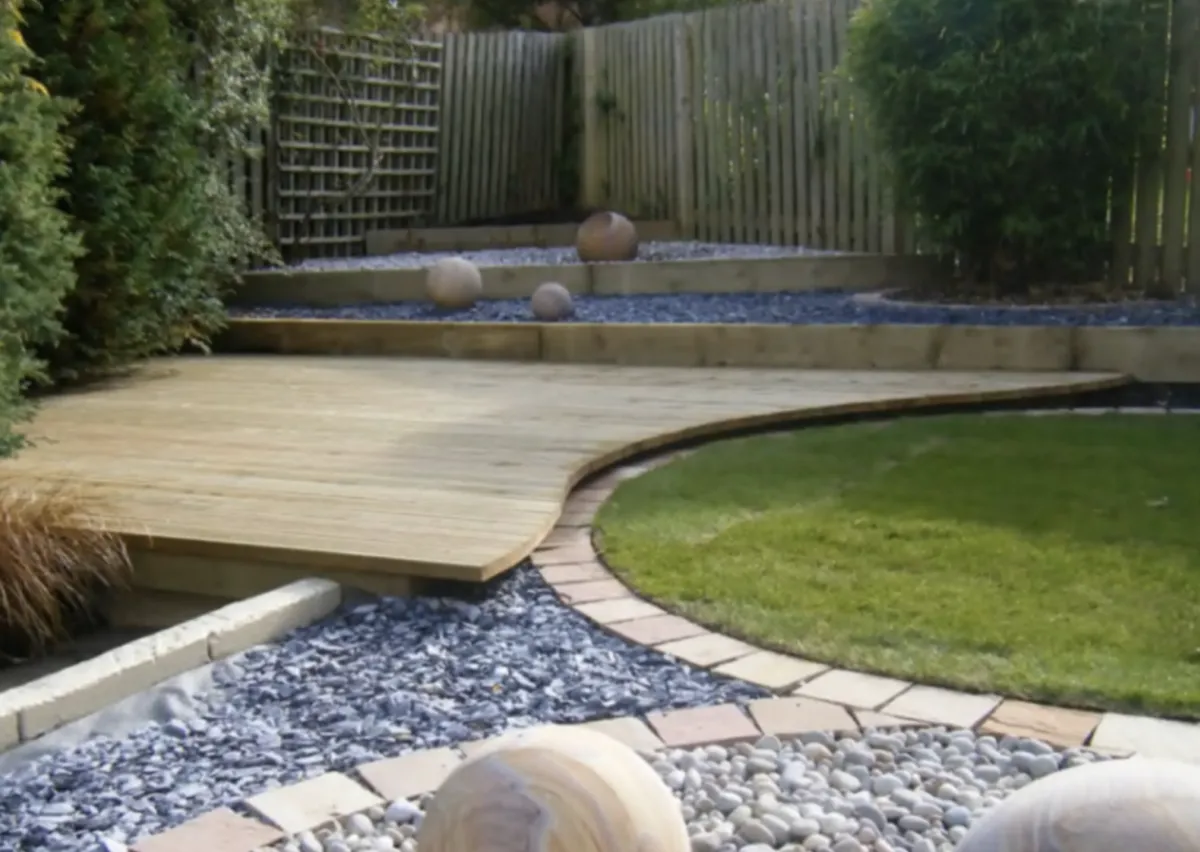
Complete landscape design plans give you the roadmap for transforming your Fort Worth property from concept to finished outdoor space. We create detailed plans showing exactly what goes where—plant locations—hardscape placement—irrigation zones—lighting positions. Not vague sketches, actual scaled drawings you can follow or hand to any contractor.
Plans start with accurate site measurements—existing features—utility locations—drainage patterns we observe during site visits. We note which areas get afternoon sun scorching plants by July—where water pools after storms—existing trees worth keeping. Over in older neighborhoods like Ryan Place, we're often working around mature trees and existing hardscape. New builds out in Veale Station or Canyon Falls start as blank slates needing everything.
Plant plans specify actual varieties—quantities—sizes at installation. We don't just write "shrub" on plans. You'll see "three 5-gallon Texas sage" or "five 1-gallon Gulf muhly grass." Spacing accounts for mature sizes so plantings don't look great for two years then become overgrown disasters. We select for Fort Worth conditions—heat tolerance—clay soil performance—winter hardiness for occasional hard freezes.
Hardscape plans show patio dimensions—walkway widths—retaining wall locations with measurements. Material specifications get included—flagstone versus pavers—wall stone types—edging details. If you're building a patio off your back door, plans show exactly how big—what materials—how it connects to other landscape areas.
Irrigation plans map zone coverage—head locations—valve positions—controller specifications. Critical in Fort Worth summers where plants won't survive without proper watering. We design zones based on plant water needs and sun exposure—not just random sprinkler placement hoping for adequate coverage.
Grading and drainage plans show water movement—catch basin locations—French drain routing when needed. Fort Worth clay doesn't drain naturally so most properties need drainage help. Plans indicate slope directions—swale locations—how water moves away from foundations and problem areas.
Lighting plans position fixtures for pathways—accent lighting—security illumination. Shows transformer location—wire runs—fixture types for different applications. Good lighting completely changes how your property looks and functions after dark.
Construction details provide installation guidance—cross sections—material specifications. Helps ensure whoever installs your landscape does it correctly matching design intent. Particularly important for hardscape construction—retaining walls—drainage systems requiring proper techniques.
Plans become your reference throughout installation and future maintenance—knowing what plants are where—understanding irrigation zones—seeing original design intent. Valuable when making changes years later or hiring new maintenance companies needing to understand your landscape layout.
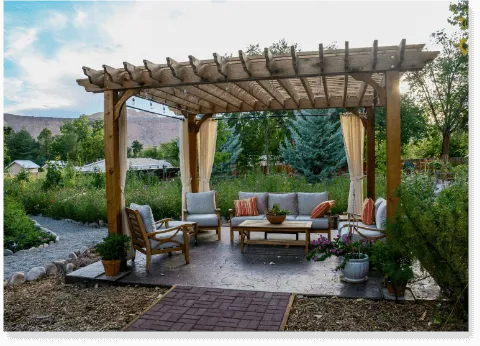
Garden design creates functional growing spaces—vegetable gardens—herb gardens—cutting flower beds—specialized planting areas serving specific purposes beyond general landscaping. Fort Worth's climate challenges gardens but proper design makes productive growing possible despite heat and clay soil.
Vegetable garden design addresses Fort Worth's extended growing season—two planting windows—spring and fall crops. We position gardens for adequate sun—minimum six hours daily for most vegetables—while considering afternoon shade benefits during brutal July and August. Raised beds work exceptionally well here—overcoming clay soil—improving drainage—easier soil amendment—better growing conditions. We design beds at comfortable working heights—pathway widths for wheelbarrow access—irrigation positioned for efficient watering.
Herb gardens need different considerations—perennial versus annual herbs—sun requirements varying by variety—proximity to kitchen for convenient harvesting. Mediterranean herbs like rosemary and thyme handle Fort Worth heat beautifully—well-drained soil—full sun exposure. We design herb gardens near patios or kitchen doors—raised planters—dedicated bed areas—even integrated into landscape beds.
Cutting flower gardens provide blooms for arrangements—seasonal color—pollinator habitat. We select varieties performing well in North Texas—zinnias—cosmos—sunflowers for summer—pansies and snapdragons for cooler months. Design includes succession planting areas—staggered bloom times—consistent cutting availability throughout seasons. Folks over near TCU with smaller yards often want compact cutting gardens—efficient use of limited space—maximum flower production.
Soil preparation is critical for garden success in Fort Worth. Our clay soil needs significant amendment—compost—expanded shale—organic matter improving drainage and fertility. We design gardens accounting for ongoing soil improvement—compost bin locations—mulch storage—practical maintenance access.
Irrigation design for gardens differs from general landscape watering. Vegetables need consistent moisture—drip irrigation works better than overhead sprinklers—reduced disease pressure—efficient water delivery to root zones. We design irrigation specifically for garden watering needs.
Garden structures get incorporated into designs—trellises for climbing plants—stakes for tomatoes—shade structures for heat-sensitive crops. Paths between beds using decomposed granite or mulch—comfortable spacing—all-weather access for tending and harvesting.
Seasonal planning helps maximize Fort Worth's growing potential. Cool season crops from October through May—warm season planting March through June—summer survival strategies for July and August. We design gardens supporting year-round growing when clients want that level of production.
Pest and disease management factors into design—plant spacing for air circulation—companion planting strategies—resistant varieties when available. Fort Worth gardens deal with specific challenges—spider mites in heat—powdery mildew during humid periods—designs minimizing these common problems.
Backyard design transforms rear yards into functional outdoor living spaces—entertainment areas—private retreats—kid and pet-friendly zones—whatever fits your lifestyle and property. Fort Worth backyards range from small urban lots to sprawling suburban properties—each needs different design approaches maximizing available space.
Outdoor living areas form the foundation of most backyard designs—patios—decks—shaded structures for actually using space during our hot months. We size patios based on typical use—furniture layouts—entertaining frequency—cooking areas. A family of four eating dinner outside needs different space than someone hosting regular gatherings. Over in Fairmount with smaller lots, efficient design maximizes limited space. Newer homes in western Fort Worth often have larger yards allowing extensive outdoor rooms.
Shade is non-negotiable in Fort Worth backyards. Trees provide natural cooling—we preserve existing mature trees whenever possible—specify new shade trees positioned for afternoon sun protection. Pergolas, arbors, covered patios create immediate shade while trees mature. Afternoon sun from the west makes western exposure particularly brutal—design addresses this with strategic shade placement.
Kitchen and cooking areas get incorporated when clients want outdoor entertaining capability. Built-in grills—counters—storage—sometimes full outdoor kitchens with refrigeration and sinks. We design these areas considering gas line routing—electrical needs—proximity to indoor kitchen—prevailing wind direction so smoke doesn't blow toward seating areas.
Privacy screening addresses neighbor views—street visibility—creating secluded outdoor spaces. Fencing, privacy walls, strategic plant screening—depends on budget and aesthetic preferences. Mature trees and large shrubs create natural privacy. Faster solutions use fencing or walls with climbing vines or espalier plants softening hardscape.
Play areas for kids need durable surfaces—open space for activities—sight lines from main living areas for supervision. We design these areas transitioning as kids age—temporary play equipment—permanent features like sport courts or pools—flexible spaces adapting to changing family needs.
Pet considerations include durable turf—designated potty areas—secure fencing—shade and water access. Dogs are tough on landscapes—we design for wear patterns—choose resilient plants—specify hardscape in high-traffic zones.
Landscape beds frame backyard spaces—define areas—provide seasonal color and texture. We design beds with appropriate scale for yard size—plant selection for Fort Worth conditions—maintenance levels matching client commitment.
Lighting extends backyard usability after dark—path lighting—accent lighting—entertainment area illumination—security lighting. Well-designed lighting creates ambiance while providing safety and security.
Drainage design prevents standing water—protects foundations—ensures usable space after rain. Critical in Fort Worth clay soil—proper grading—drainage solutions—keeping backyards functional year-round.
Front yard design creates curb appeal—welcoming entries—neighborhood presence while functioning practically for daily use. Fort Worth front yards face unique challenges—afternoon sun exposure—street visibility—HOA requirements in many neighborhoods—limited space in older areas versus expansive yards in newer developments.
Entry design establishes first impressions—walkways—landscaping framing front doors—lighting for safety and aesthetics. We design entries that feel welcoming—appropriate scale for home size—materials complementing architectural style. Brick homes common in established Fort Worth neighborhoods pair well with flagstone or brick pavers. More contemporary homes might use clean-lined concrete or modern pavers.
Foundation plantings soften home architecture—provide scale—add color and texture. Common mistake is planting too close or choosing varieties growing too large—eventually covering windows—requiring constant pruning. We design foundation beds with mature plant sizes in mind—adequate spacing—layered heights creating depth. Fort Worth's heat reflects off home exteriors—foundation beds need tough plants handling reflected heat and limited water.
Driveway landscaping frames entries—defines property edges—enhances curb appeal. We design beds along driveways using durable plants tolerating occasional vehicle encroachment and reflected heat from concrete. Older neighborhoods like Berkeley have narrow driveways—limited planting space—requiring scaled-down designs. Newer areas often have wider driveways and more landscape opportunity.
Street-facing design considers neighborhood context—existing mature trees—overall streetscape aesthetics. We design front yards fitting neighborhood character while expressing individual style. Historic districts like Fairmount need designs respecting period architecture. Contemporary neighborhoods allow more modern landscape design approaches.
Lawn areas in front yards balance aesthetics with maintenance. Large expanses of St. Augustine look nice but require significant water and mowing. We design appropriate lawn sizes—incorporate more bed areas—reduce maintenance while maintaining attractive appearance. Some HOAs have minimum turf requirements affecting design options.
Parking considerations factor into front yard design—guest parking—driveway aprons—turnarounds on larger properties. We design hardscape for practical vehicle access while minimizing impervious cover and maintaining landscape appeal.
Mailbox areas and utility screening need design attention—incorporating mailboxes attractively—screening utility boxes and equipment—addressing necessary but unattractive front yard elements.
Seasonal color keeps front yards interesting year-round—winter structure—spring blooms—summer heat tolerance—fall color. We design with four-season interest using evergreen structure—deciduous color—perennial variety—seasonal annual rotation if desired.
Lighting design for front yards provides safety—highlights architectural features—illuminates walkways—adds security. Well-lit entries feel welcoming while deterring unwanted visitors.
Outdoor living design creates functional exterior spaces—entertainment areas—cooking zones—comfortable seating—features extending home living space outside. Fort Worth's climate allows outdoor living much of the year—spring and fall are perfect—summer requires shade and cooling strategies—winter allows patio use on mild days.
Seating areas anchor outdoor living spaces—conversation groupings—dining areas—lounge zones for relaxation. We design these areas with furniture layouts in mind—adequate space for movement—comfortable arrangements for typical use. Built-in seating creates permanent solutions—freestanding furniture allows flexibility—combination approaches work well for many properties.
Outdoor kitchens range from simple grill stations to complete cooking facilities—refrigeration—sinks—storage—pizza ovens. We design based on actual cooking habits—budget—available space. Someone grilling burgers occasionally needs different setup than serious outdoor cooks. Gas line locations—electrical requirements—counter workspace—storage for utensils and supplies all factor into design.
Shade structures are essential for Fort Worth outdoor living—pergolas—arbors—covered patios—pavilions. Afternoon sun makes unshaded spaces unusable during summer months. We design shade considering sun angles—prevailing winds—rain protection—integration with home architecture. Retractable shade options provide flexibility—solid roofs offer complete weather protection.
Fire features extend seasonal use—fire pits—fireplaces—gathering spots for cooler evenings. Natural gas or propane connection decisions affect placement and design. We position fire features considering wind patterns—safe clearances—seating arrangements—ambiance creation.
Water features add sound and visual interest—fountains—ponds—waterfalls creating focal points and masking neighborhood noise. We design water features appropriate for space scale—maintenance commitment—budget considerations. Recirculating features work well in Fort Worth—conserve water—create movement and sound.
Outdoor entertainment systems incorporate speakers—televisions—wifi coverage—lighting controls. We coordinate with AV installers—design accommodating equipment—weatherproof solutions—user-friendly controls.
Bar areas and beverage stations keep drinks accessible—ice—refrigeration—serving space for gatherings. We design these areas near seating—incorporate storage—provide convenient access without dominating space.
Privacy elements create intimate outdoor rooms—walls—screening—strategic plantings blocking neighbor views. Particularly important in newer neighborhoods where homes sit close—outdoor living spaces visible from multiple properties.
Heating solutions extend cool weather use—infrared heaters—fire features—enclosed spaces trapping warmth. We design heating appropriate for typical use patterns—budget—space requirements.
Flooring materials affect comfort and aesthetics—pavers—flagstone—concrete—composite decking each offering different benefits. We specify materials based on budget—desired aesthetic—maintenance preferences—Fort Worth weather performance.
Retry
Landscape renovation updates existing landscapes—refreshing tired plantings—modernizing outdated designs—fixing problem areas without complete removal. Most Fort Worth properties eventually need renovation—overgrown shrubs—dead plants—outdated mulch—failing irrigation—hardscape settling or cracking after years of our clay soil movement.
We start by assessing what's worth keeping versus what needs replacement. Mature trees have tremendous value—decades of growth—cooling benefits—neighborhood character. Established shrubs sometimes just need severe pruning and surrounding refreshment rather than removal. Over in neighborhoods like Mistletoe Heights, we often work around beautiful old live oaks and pecans—designing renovations preserving these assets while updating everything else.
Overgrown foundation plantings are common renovation needs. Plants selected years ago without considering mature size now cover windows—crowd entries—require constant shearing. We remove oversized specimens—replant with appropriately scaled varieties—restore proper proportions between home and landscape. Indian hawthorns planted under windows inevitably outgrow spaces. Wax leaf ligustrum used as "small" shrubs become massive. We fix these sizing mistakes during renovation.
Failing irrigation systems need updating during landscape renovation. Old systems with coverage gaps—broken lines—outdated controllers—inefficient water delivery. We evaluate existing systems—repair what's salvageable—redesign zones for updated plantings—install modern controllers with weather sensing and smart capabilities. Fort Worth water bills get expensive—efficient irrigation saves money while keeping landscapes healthy.
Hardscape repairs address settling pavers—cracked concrete—shifting retaining walls—deteriorated surfaces from years of use and weather exposure. Our expansive clay soil causes movement—improper installation compounds problems—renovation fixes these issues properly. Sometimes complete hardscape replacement makes more sense than patching failing surfaces.
Drainage improvements often get incorporated into renovation projects. Property owners live with standing water—erosion—foundation concerns for years before addressing problems. Renovation provides opportunity to fix drainage properly—French drains—catch basins—regrading—solutions making properties functional after storms.
Mulch and bed refreshing updates appearance dramatically—relatively low cost—high visual impact. We remove old decomposed mulch—edge beds crisply—add fresh quality mulch creating clean renewed look. Sometimes we redesign bed shapes during renovation—more contemporary lines—better proportions—improved plant arrangements.
Lawn renovation addresses bare spots—weed invasion—compacted soil—thinning turf common in established Fort Worth lawns. Core aeration—overseeding—soil amendment—sometimes complete sod replacement depending on lawn condition. St. Augustine struggles in heavy shade—renovation might reduce lawn areas under trees—expand beds with shade-tolerant plants.
Color updates incorporate newer plant varieties—better performers—more interesting options than original landscape included. Native and adapted plants used more commonly now—sustainable choices—lower maintenance—better heat and drought tolerance. Renovation is perfect timing for upgrading plant palette.
Lighting additions transform properties used primarily during daylight. Adding landscape lighting during renovation—path lighting—accent lighting—security illumination—extends property enjoyment and improves safety.
Landscape consultation provides professional guidance—expert advice—design direction without full design services or installation commitment. Useful for property owners wanting professional input—DIY project planning—second opinions on contractor proposals—troubleshooting existing landscape problems.
Initial consultations typically happen on-site—walking property together—discussing goals and concerns—providing immediate feedback and suggestions. We observe drainage patterns—sun exposure—existing plant health—hardscape conditions—offering professional assessment based on years of Fort Worth landscape experience. Folks over in older neighborhoods like Arlington Heights often want guidance on updating landscapes themselves—we provide direction without full design fees.
Problem-solving consultations address specific issues—failing plants—drainage problems—pest issues—renovation decisions. Why are shrubs dying along the foundation? Is this irrigation coverage adequate? Should we remove this tree or try to save it? We provide answers based on actual site conditions and Fort Worth-specific challenges—clay soil—heat stress—common local problems.
Design direction consultations help property owners develop their own plans—layout suggestions—plant recommendations—material selections—professional guidance without producing formal design documents. We sketch rough layouts—suggest plant varieties proven in Fort Worth—discuss hardscape options—provide framework for DIY implementation or contractor bidding.
Contractor proposal reviews offer second opinions on quotes received—verifying appropriate scope—identifying potential issues—ensuring fair pricing. We review other contractors' proposals—check plant specifications—evaluate proposed techniques—confirm proposals align with good landscape practices for Fort Worth conditions. Sometimes proposals include inappropriate plants for our climate—inadequate drainage solutions—installation shortcuts we identify during review.
Plant selection consultations focus specifically on choosing varieties—Fort Worth appropriate options—aesthetic preferences—maintenance requirements—mature sizes. We recommend specific plants for sun exposure—soil conditions—water availability—design goals. Avoid common mistakes like planting trees that'll outgrow spaces or shrubs requiring constant shearing.
Installation guidance consultations help DIY property owners understand proper techniques—planting depth—soil amendment—irrigation setup—hardscape construction basics. We explain how to work with Fort Worth clay soil—amend properly—plant correctly—avoid common mistakes causing plant failures and hardscape problems.
Phasing consultations help property owners prioritize projects—budget limitations—tackling renovation or new construction landscaping in manageable stages. We suggest logical phasing—infrastructure first—hardscape and irrigation before planting—priority areas versus future phases. Particularly helpful for larger properties or budget-conscious projects needing multi-year completion.
Maintenance consultations address ongoing care—pruning timing—fertilization needs—seasonal tasks—problem identification. New property owners often need guidance caring for inherited landscapes—understanding irrigation systems—learning maintenance requirements—identifying existing plants.
Consultations typically charge hourly rates—more affordable than full design services—valuable professional input without major investment. Good option when you don't need complete design documentation but want expert guidance for decisions and planning.
3D landscape design creates realistic visualizations—computer-generated renderings—helping property owners envision finished landscapes before installation begins. Traditional flat drawings work fine for many projects but 3D design helps visualize spatial relationships—plant mature sizes—hardscape appearance—overall design impact.
We use landscape design software creating accurate 3D models—your property—existing features—proposed design elements. Models show designs from multiple angles—eye-level views—aerial perspectives—specific viewpoints like looking from back door toward yard. Seeing design three-dimensionally helps understand how everything fits together spatially.
Hardscape visualization shows patio appearance—materials—size relationships to home and yard—how walkways connect spaces. Selecting between flagstone and pavers becomes easier seeing rendered versions. Understanding retaining wall scale—material appearance—integration with plantings helps make confident decisions. Over in areas like Crestline where properties have significant slopes, 3D visualization really helps understand terracing solutions and retaining wall systems.
Plant maturity visualization shows landscapes at installation and five years later—understanding how plants fill in—mature sizes—avoiding common mistake of judging designs by installation appearance. Shrubs planted three feet apart look sparse initially but fill in beautifully—3D models at maturity show this progression. Helps clients understand spacing decisions and growth expectations.
Material comparisons allow viewing same design with different material options—comparing costs visually—understanding aesthetic differences. See your patio in flagstone versus pavers—walkways in decomposed granite versus concrete—making selections with clear visual reference.
Lighting visualization shows nighttime appearance—fixture placement effects—illumination patterns—helping design effective landscape lighting. Seeing rendered nighttime views helps understand lighting impact—adjusting fixture positions—selecting appropriate fixture types for desired effects.
Color and texture visualization helps understand plant combinations—seasonal appearance—texture contrasts—color palettes working together. Particularly useful for clients struggling to envision plant descriptions becoming actual landscape. Seeing rendered plantings with seasonal color changes—texture variety—mature appearance helps confirm selections.
Client communication improves dramatically with 3D visualization. Spouses often envision designs differently—3D models ensure everyone understands proposed design—reducing surprises during installation. Helps facilitate decision making—gaining approvals from hesitant family members—confirming budget spending on design everyone actually wants.
Design revisions happen more efficiently with 3D models—adjusting elements—viewing changes immediately—confirming improvements before finalizing plans. Moving a patio six feet over—changing plant selections—adjusting walkway curves all visible instantly in updated renderings.
3D design costs more than traditional flat plans—additional software—time creating accurate models—rendering multiple views. Worth the investment for larger projects—complex designs—properties with significant hardscape—situations where visualization really helps decision making and client confidence.
Sustainable landscape design minimizes environmental impact—conserves water—reduces chemical inputs—supports local ecosystems—creating landscapes functioning with nature rather than fighting it. Increasingly important in Fort Worth where water conservation matters—environmental awareness grows—property owners want responsible landscape choices.
Native plant emphasis forms sustainable design foundation—species evolved for North Texas conditions—requiring minimal irrigation once established—supporting local wildlife and pollinators. Texas natives like flame acanthus—autumn sage—Gregg's dahlberg daisy—native grasses provide color and texture while handling Fort Worth heat and occasional drought naturally. We design with predominantly native plants supplemented by well-adapted non-natives performing similarly.
Water conservation strategies reduce irrigation needs—efficient system design—drought-tolerant plant selection—mulching—smart controllers adjusting watering based on weather. Fort Worth summers challenge water conservation but proper design creates attractive landscapes using significantly less water than traditional approaches. Grouping plants by water needs—hydrozoning—allows targeted irrigation rather than overwatering drought-tolerant plants or underwatering thirsty varieties.
Soil health improvement through organic amendment—compost addition—minimal chemical fertilizers—builds healthy soil supporting plant growth naturally. Our clay soil benefits tremendously from organic matter addition—improves drainage—increases microbial activity—creates sustainable growing medium. We avoid synthetic fertilizers when possible—use organic options—focus on building soil health rather than feeding plants artificially.
Rainwater harvesting captures rain for landscape irrigation—rain barrels—cisterns—reducing municipal water dependence. Even simple rain barrel systems help—every gallon harvested reduces irrigation needs. Larger properties might incorporate cistern systems—storing substantial water for dry period irrigation.
Permeable hardscape surfaces allow water infiltration—reduce runoff—recharge groundwater naturally. Permeable pavers—decomposed granite—gravel pathways instead of solid concrete where appropriate. Particularly important in Fort Worth where clay soil already struggles with drainage—permeable surfaces help rather than compounding runoff problems.
Pollinator support through plant selection—native flowers—avoiding pesticides—creating habitat for bees—butterflies—beneficial insects. Folks near parks like the Fort Worth Nature Center especially appreciate pollinator gardens supporting local ecosystems. We design landscapes providing blooms across seasons—host plants for butterfly larvae—nesting sites for native bees.
Integrated pest management reduces chemical pesticide use—encouraging beneficial insects—accepting minor pest damage—treating problems only when necessary using least toxic effective options. Sustainable landscapes tolerate some imperfection—not every leaf perfect—working with nature's balance rather than fighting constantly.
Organic mulch use suppresses weeds—retains moisture—moderates soil temperature—breaks down adding organic matter. We specify quality mulch—appropriate depth—avoiding overuse which causes problems. Natural cedar or hardwood mulch rather than dyed products.
LED landscape lighting reduces energy consumption—longer bulb life—lower electric costs while providing same illumination. Sustainable design incorporates efficient lighting—solar options where appropriate—smart controls minimizing unnecessary operation.
Lawn reduction strategies minimize high-maintenance turf—expand beds—use groundcovers—reduce mowing and irrigation needs. St. Augustine requires significant water and maintenance—we design landscapes with appropriately sized lawn areas—not excessive expanses out of habit.
Native plant design uses species indigenous to North Texas—evolved here—adapted to our specific conditions—thriving naturally with minimal intervention once established. Fort Worth sits in Cross Timbers ecoregion—unique plant community—specific natives performing beautifully in our clay soil and challenging climate.
Native plant benefits include water conservation—deep root systems—drought tolerance once established—reduced irrigation needs after first growing season. Natives evolved surviving Fort Worth's typical rainfall patterns—occasional droughts—without supplemental watering. During establishment they need regular water but mature native plantings survive primarily on rainfall.
Wildlife support from native plants provides food and habitat—berries—seeds—nectar—host plants for butterfly larvae—supporting local ecosystem. Native landscape designs attract birds—butterflies—beneficial insects creating living landscapes rather than sterile plant collections. Over near the Fort Worth Nature Center, native landscapes integrate beautifully with surrounding natural areas.
Native trees suitable for Fort Worth landscapes include live oak—Texas red oak—cedar elm—bur oak—Texas ash—providing shade—fall color—wildlife value. We select native trees based on space available—desired characteristics—site conditions. Live oaks are magnificent but need room—cedar elms handle difficult sites—red oaks provide stunning fall color.
Native shrubs offer variety and resilience—flame acanthus with hummingbird-attracting flowers—possumhaw holly with winter berries—roughleaf dogwood providing fall color—agarita's early spring blooms. These natives create structure—seasonal interest—habitat while handling Fort Worth conditions easily.
Native perennials and grasses provide color and texture—black-eyed Susan—purple coneflower—Gregg's mistflower—fall aster—native salvias—ornamental grasses like little bluestem and Gulf muhly. These plants create dynamic landscapes changing through seasons—surviving heat—thriving in clay—requiring minimal maintenance.
Design with natives doesn't mean wild unkempt landscapes. We design formal or contemporary landscapes using native plants—organized arrangements—intentional design—natives simply become the plant palette. Structured beds with massed native grasses create clean modern aesthetic. Mixed native plantings in natural arrangements work for different style preferences.
Native plant establishment requires patience—first year plants focus on root development—second year they grow—third year they really take off. "First year sleep, second year creep, third year leap" describes native establishment accurately. We educate clients about this timeline—avoiding disappointment—understanding mature performance comes after establishment period.
Soil preparation for natives differs from traditional landscapes—natives prefer less amendment—adapted to our native clay—excessive organic matter sometimes problematic. We amend moderately—focus on drainage if needed—avoid creating soil drastically different from what natives evolved in.
Native plant sourcing requires finding quality nurseries—not all garden centers carry extensive natives—we source from growers specializing in Texas natives—ensuring proper species—healthy plants—local ecotypes when possible.
Maintenance of native landscapes involves less intervention—minimal fertilization—reduced watering once established—occasional pruning—less intensive than traditional landscapes. However, establishment period requires attention—regular watering—mulching—weed control until plants fill in and compete effectively.
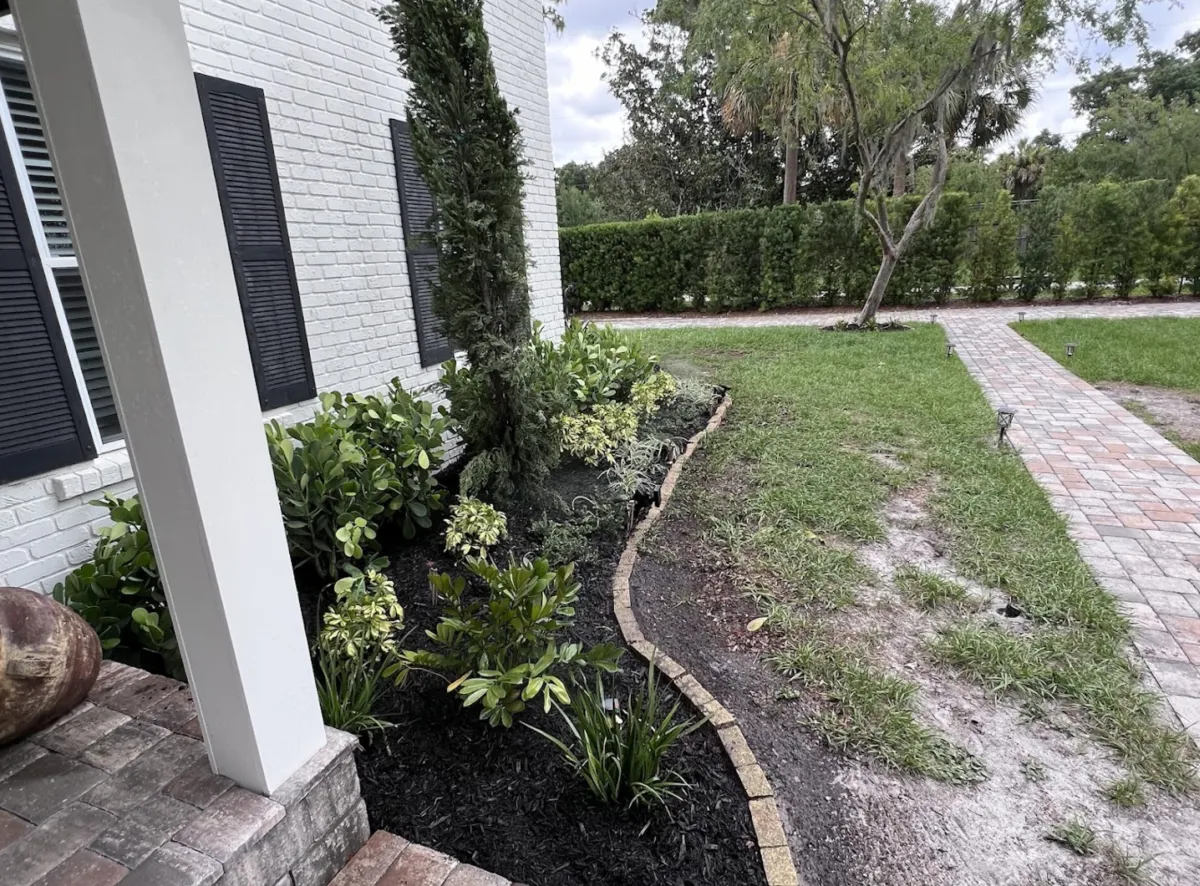

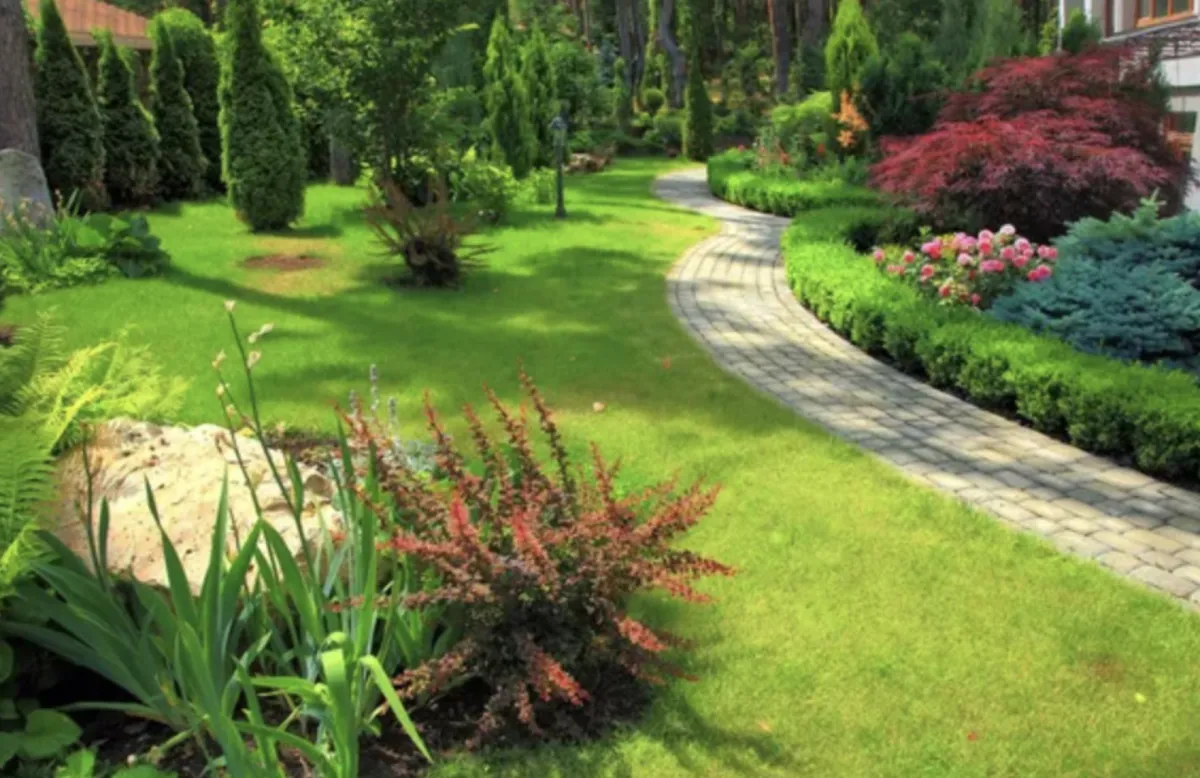
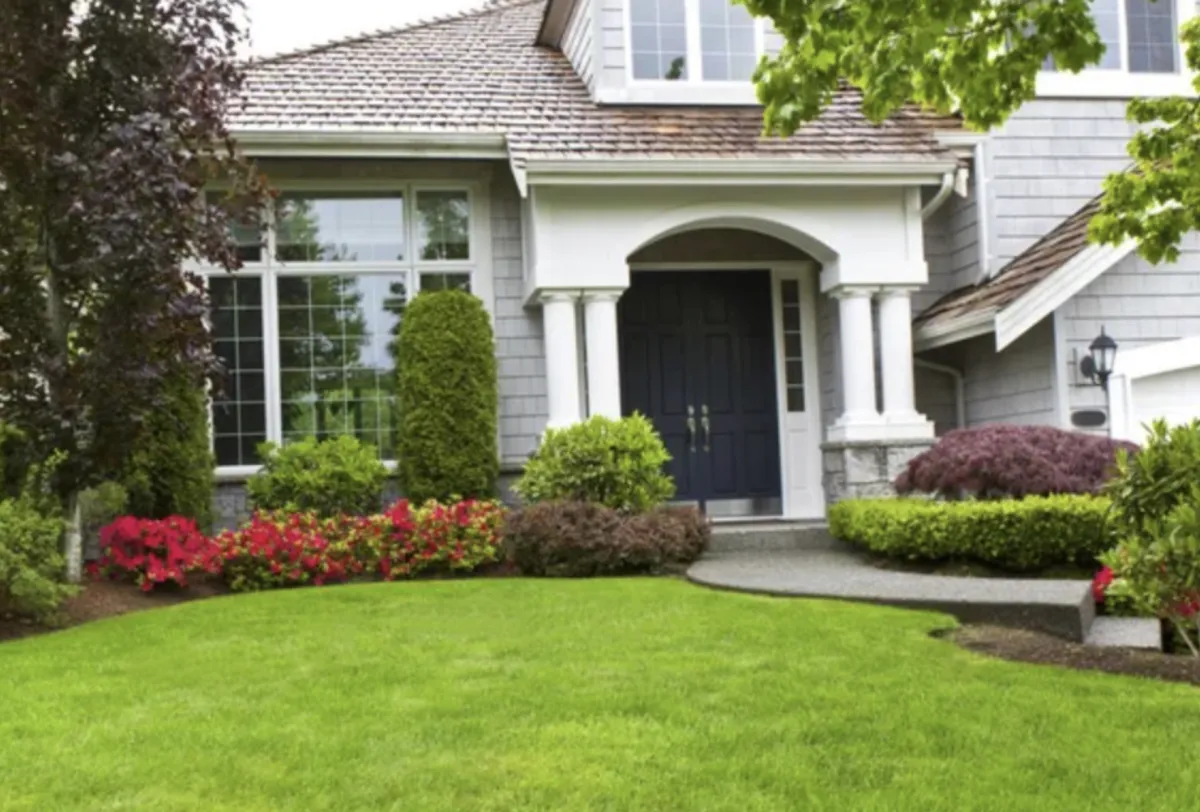
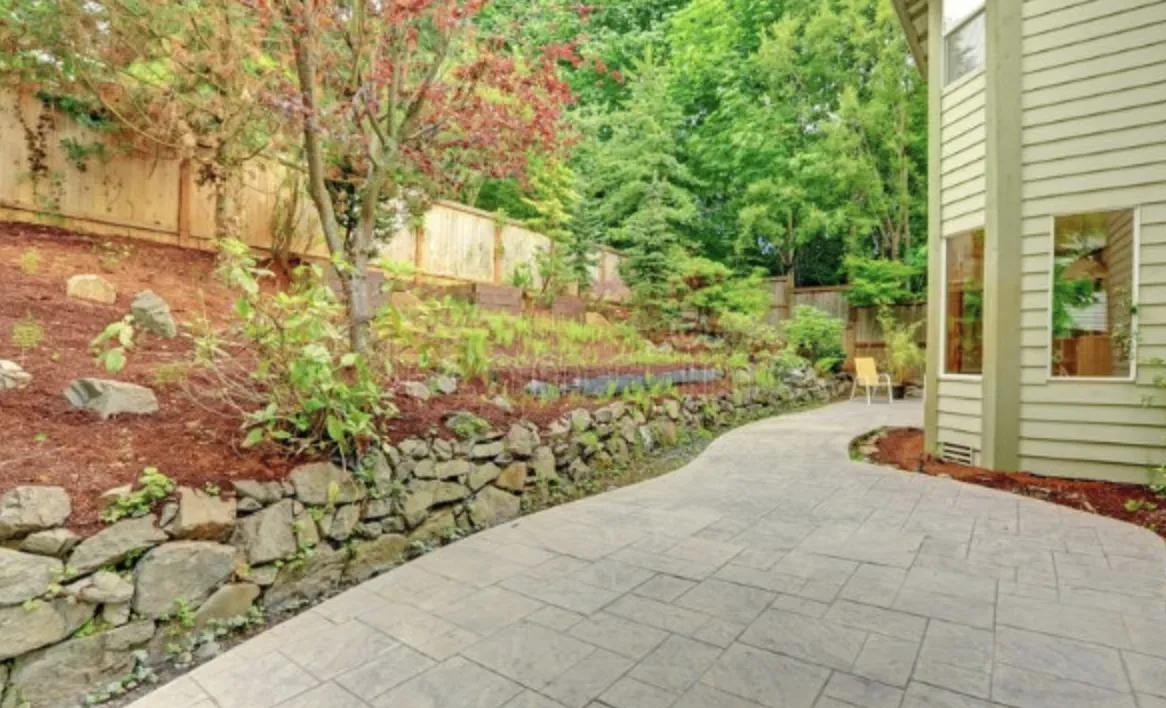

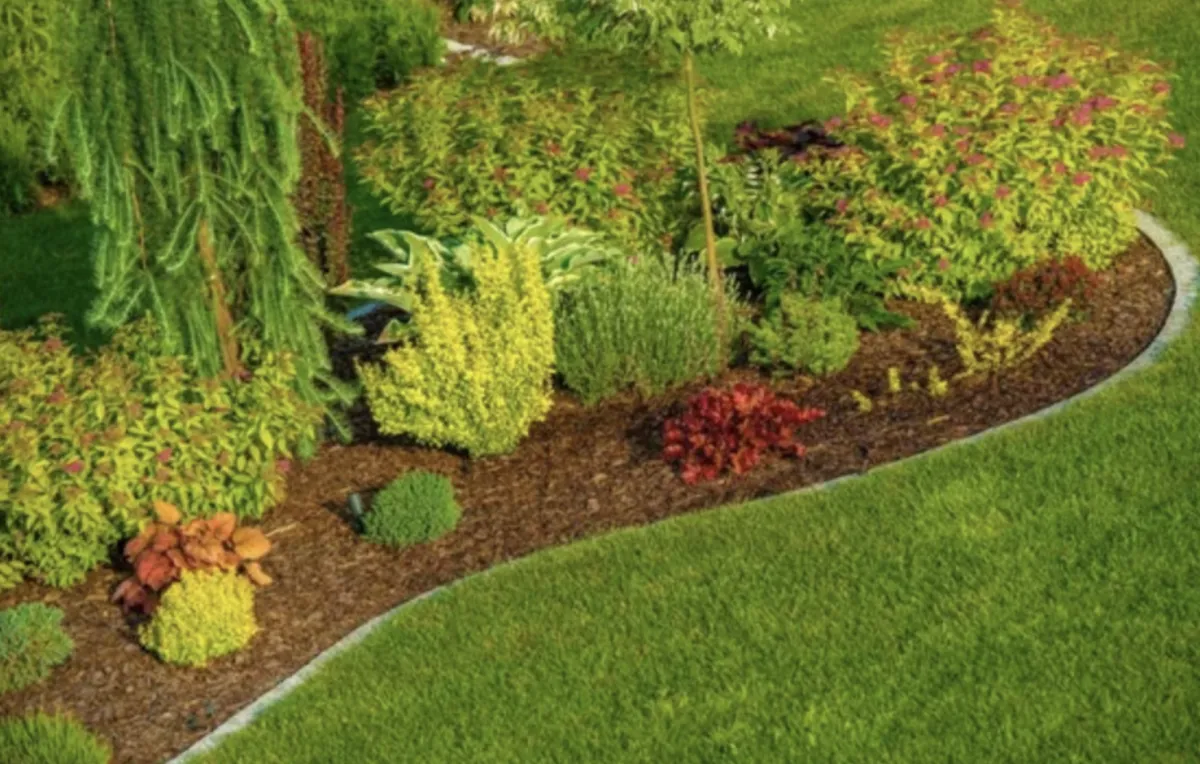

See What Our Customer Say About Us
Sarah M., Fort Worth, TX

“I can’t say enough good things about HF Landscape Design Fort Worth. They totally transformed our backyard into something out of a magazine — and they did it on time and within our budget. The team showed up early every day, cleaned up after themselves, and really listened to what we wanted. You can tell they actually care about the little details, not just getting the job done. Our neighbors keep stopping by asking who did the work — we tell everyone to call HF Landscape Design. Best decision we made for our home!”
Daniel R., Fort Worth, TX

“HF Landscape Design Fort Worth really blew us away. We had a plain front yard before, and now it looks like something you’d see in a design show. They helped pick the right plants for the Texas heat and even added lighting that makes the place glow at night. Super easy to talk to and very professional — they made the whole thing stress-free. We’d hire them again in a heartbeat.”
Megan & Tyler H., Fort Worth, TX

“Our backyard was just dirt and weeds before HF Landscape Design came in. Now it’s the spot where we spend every weekend with friends. They built a patio, added flower beds, and somehow made it all feel natural like it was always meant to be there. You can tell they love what they do — every detail was perfect. Highly recommend them to anyone in Fort Worth wanting a yard they’ll actually use.”
Start Your Landscape Design Project
Stop guessing what might work and get a professional design that addresses your property's specific challenges. Whether you're fixing drainage problems, renovating an outdated landscape, or planning new construction, we provide detailed designs that account for Fort Worth's clay soil and climate conditions.
Call (817) 580-3329 to schedule a landscape design consultation. We'll assess your property, discuss your goals and budget, and provide a clear plan for creating outdoor space that functions properly.
Service Areas: Fort Worth, Tanglewood, Ridglea Hills, River Crest, Westover Hills, Berkeley, Monticello, Mistletoe Heights, and surrounding communities.
Frequently Asked Questions
What is the average cost of landscape design?
Landscape design costs in Fort Worth typically range from $2,000 to $8,000 depending on property size—project complexity—level of detail required. Simple front yard designs for smaller properties might run $1,500 to $3,000. Comprehensive landscape plans for larger properties with detailed planting plans—hardscape designs—irrigation layouts—lighting plans usually cost $5,000 to $10,000 or more. We typically credit design fees toward installation if you proceed with us for the work. Design-only services cost more since we're not recouping fees through installation. Most clients in areas like Tanglewood or Westover Hills invest in detailed designs because their properties warrant professional planning. Newer neighborhoods with simpler yards might need less extensive design work.
What does it cost for a landscape design?
Design fees depend on project scope and what you need included. Basic conceptual designs showing general layout—plant groupings—hardscape locations run $1,500 to $3,000 for typical residential properties. Detailed construction-level plans with exact plant specifications—hardscape dimensions—grading plans—irrigation zone maps cost $4,000 to $8,000 or higher for complex projects. Commercial landscape design involves additional complexity and typically costs more. We discuss your specific needs during initial consultation and provide design fee quotes based on actual scope. Design fees get credited toward installation when you hire us for the work. Fort Worth properties with challenging conditions—significant slopes—drainage issues—often need more detailed planning which affects design costs.
What is the difference between a landscape architect and a landscape designer?
Landscape architects have formal education—state licensing—ability to stamp engineering drawings for permits. They handle complex projects requiring grading engineering—structural calculations—commercial site development—regulatory compliance. Landscape designers focus on plant selection—aesthetic layout—residential design without engineering components. In Fort Worth, landscape architects are required for certain commercial projects—retaining walls over specific heights—projects needing engineered drainage solutions. Residential projects usually work fine with landscape designers unless you've got significant slope issues—major grading needs—structures requiring engineering stamps. Landscape architects cost more but bring technical expertise for complex projects. Most residential landscapes in neighborhoods like Arlington Heights or Ridglea work well with landscape designers. Larger estates or properties with serious site challenges benefit from landscape architectural services.
Why is landscape design so expensive?
Professional landscape design involves considerable time—expertise—detailed planning work. Designers spend hours on site assessment—measuring—analyzing drainage and sun patterns—researching plant options for specific conditions. Creating scaled plans requires CAD software skills—design knowledge—understanding of Fort Worth's climate and soil conditions. Good designers prevent expensive installation mistakes—plant failures—drainage problems that cost far more to fix later. You're paying for years of experience knowing what works in North Texas clay soil—which plants survive July heat—how to design irrigation zones efficiently. Design fees also cover revisions—client meetings—coordination with contractors during installation. Cheap or free designs often mean cookie-cutter plans—inexperienced designers—or design costs hidden in inflated installation prices. Professional design upfront saves money long-term by getting things right the first time.
What is the rule of 3 in landscaping?
The rule of three suggests planting in odd-numbered groups—typically three plants—creates more natural and visually appealing arrangements than even numbers. Three plants or features create triangular compositions—visual interest—balance without formal symmetry. This applies to groupings of the same plant variety or repeating design elements throughout the landscape. In Fort Worth landscapes, you might see three crape myrtles anchoring a bed—three groupings of ornamental grasses—three boulders in a natural arrangement. The rule helps avoid the static look of paired plantings or single specimens. Works for plants of various sizes—repetition of colors—hardscape feature placement. Not a strict requirement but a helpful design principle creating more dynamic landscapes. We use the rule of three alongside other design principles—proper spacing—mature size consideration—Fort Worth-appropriate plant selection.
What is a realistic landscaping budget?
Realistic budgets for Fort Worth landscape projects typically start around $10,000 for basic front yard renovations and run $20,000 to $50,000 for complete front and backyard transformations with hardscaping. Simple refreshes—new plants—mulch—irrigation repairs might cost $5,000 to $8,000. Projects including patios—retaining walls—outdoor kitchens—extensive plantings easily reach $50,000 to $100,000 or more. Budget depends on property size—existing conditions—how much hardscape you want—plant material quality and maturity. Fort Worth's clay soil often requires additional drainage work affecting costs. Established neighborhoods like Monticello with mature landscapes might need less work than new construction in Walsh Ranch starting from dirt. Quality materials and experienced installation cost more upfront but last longer and perform better in our climate.
